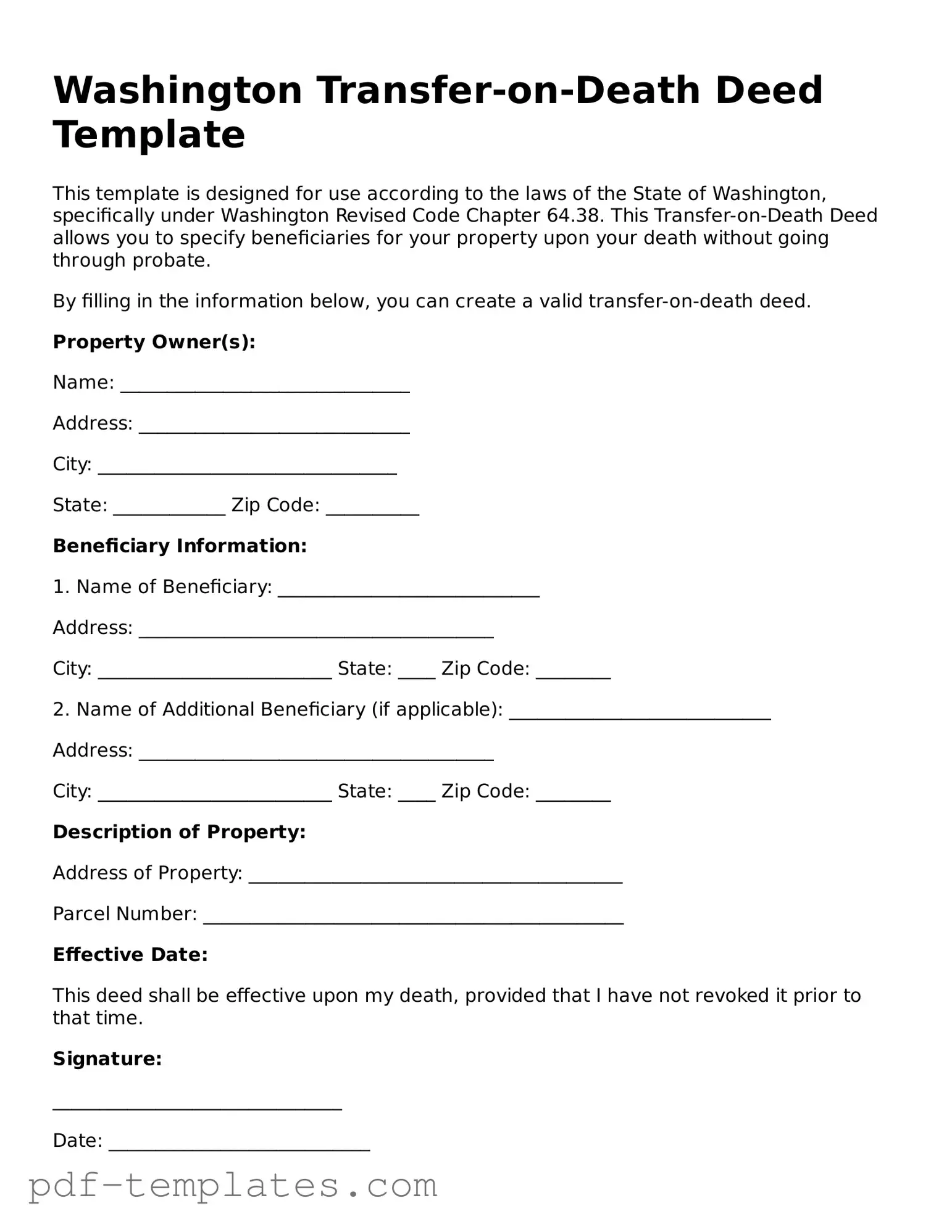Official Transfer-on-Death Deed Template for Washington State
The Washington Transfer-on-Death Deed form allows property owners to designate a beneficiary who will automatically receive their property upon the owner's death, bypassing the probate process. This legal instrument provides a straightforward way to transfer real estate, ensuring that the property passes directly to the chosen individual without the complexities often associated with inheritance. For those considering this option, filling out the form is an essential step in securing one's estate plan.
Start the process today by clicking the button below to fill out the Transfer-on-Death Deed form.
Customize Form Now
